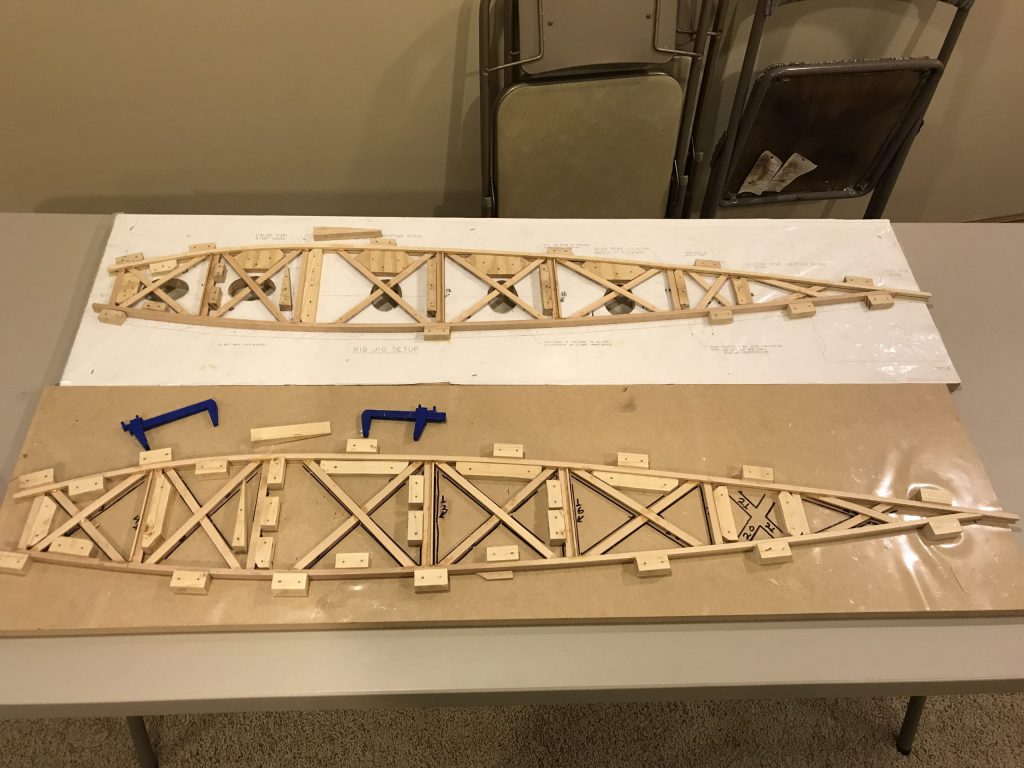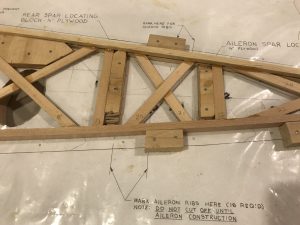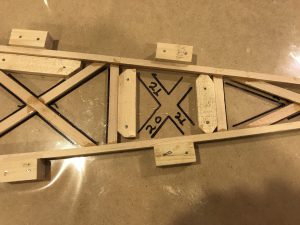I’ve knocked out a few more aileron ribs, two at a time. I’m about halfway through them and trying to speed things up a little, so I don’t die of old age with a half finished airplane.
Yesterday I decided to use up a piece of obviously bad capstrip Aircraft Spruce saw fit to ship me. This piece has a large chunk missing out of one edge, part of a knothole or pitch pocket or something. Part of it is in no way suitable for aircraft use or much else for that matter. But – there’s enough good wood there to use it for false ribs, so I made one of those. That went OK, but it’s apparent that I will need to soak the top capstrip in HOT water for the false ribs.
I’m looking forward to starting work on the tail surfaces. I’m planning to get out to the garage and clear off the workbench this week, lay out the plans and see exactly what I will need to get started. The wood called out is white pine, so I’ll start checking the local places for suitable pieces of white pine or Douglas fir… a little heavier, but I know Menard’s sells some good boards from which I can cut suitable pieces for the laminations.



